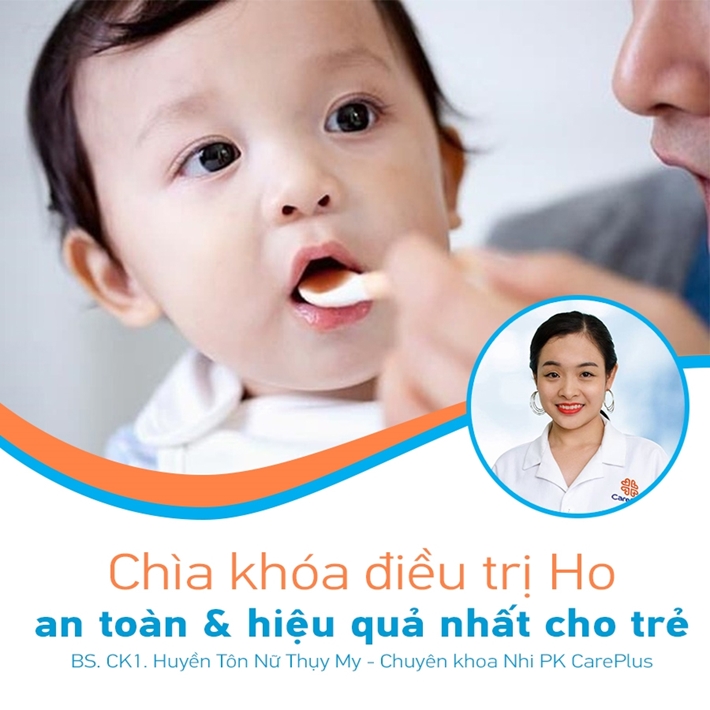The safest and most effective cough treatment for children
Cough is one of the most common diseases at the peak in the season change. Coughing is uncomfortable for children, stressing parents, and even causes of family conflicts over the treatment. To answer the big question ``What is the most effective and safest way to treat a child's cough?” Parents should answer 2 small questions '' What is a cough '' and '' Why do you cough? '' to avoid use inappropriate medicine.

11/3/2020 2:36:38 PM
1. WHAT IS COUGH?
2.WHY DO YOU COUGH?
The most common is acute cough <2 weeks. If the child has a subacute cough that lasts for more than 2 weeks or the cough lasts > 4 weeks, parents should have the child to see a respiratory specialist for screening and treatment.
The most common <2 weeks of acute cough is caused by:
-
Viral respiratory infections or colds: With fever usually for 3 days, sneezing, runny or stuffy nose. After the fever subsides, your child may cough more and have a thicker runny nose. Most signs, cough, and runny nose progress gradually in 7-10 days and usually go away before 14 days.
-
Pneumonia: Is the cause of most anxiety by parents and often think immediately if their child has a fever and cough.
-
Bronchiolitis: is a very common cause in children under 24 months of age, but parents worry about nothing related to asthma? Symptoms of phlegm cough, wheezing, difficulty breathing.
-
Acute bronchitis: His cough is like a barking dog, a hoarse, hoarse or lossy sound, hissing breath, may or may not be feverish. These are very characteristic signs of the disease, a disease caused by a viral - viral infection.
-
Others: asthma exacerbations, airway foreign bodies, or acute lung damage caused by chemicals or smoke.
3.HOW THE CHILD TREATMENT IS EFFECTIVE
Many parents and grandparents actively give their children unnecessary treatment for countless unnecessary medicines even though the child has no fever or infection to remove the cough. In fact, COUGH is a symptom, so, TREATMENT THE CAUSE is more effective.
For example, Cough due to asthma, applying aerosol therapy to reduces bronchospasm, reduces inflammation; Using antibiotics for Cough due to bacterial pneumonia; Allergic Cough Eliminates the allergen for Allergic Cough; Bronchoscopist removes the object if Coughing is caused by foreign objects.
4.WHEN SHOULD I TAKE A CHILD TO SEE A DOCTOR?
Cough is a natural reflex, good for the body, helping to expel mucus secreted in battles, or foreign objects. No need to worry if the child is still playing, eating, sleeping well. But if your child has one of the following signs, should take him to see a doctor:
1. Children under 4 months old
2. Rapid breathing, difficulty breathing, or paleness during a cough.
3. Cough With other symptoms such as high fever or vomiting or Wheezing, hissing breath, hoarseness
4. Cough does not naturally get better after 10-14 days after viral respiratory infections
5. Cough a lot, causing vomiting, affecting sleep, eating, playing activities, and the physical development of the child.
6. Children are lazy, stop eating, drink, urinate less, look tired.
7. Coughing onset after choking on food or water, although a long time ago.
8. Cough with bloody sputum, thick yellow, green.
9. Whenever parents are worried